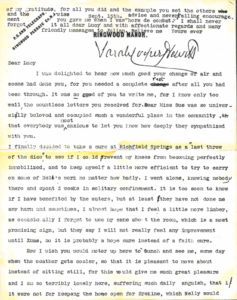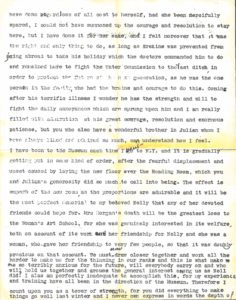In last month’s Short Story, Josephine Rodgers introduced us to the pastel masterpieces of Carroll Beckwith, as well as his friendship with the Hewitt sisters, through a drawing of a mysterious young woman. This month, Nilda Lopez, Library Technician at Cooper Hewitt, Smithsonian Design Library, illustrates another Hewitt friend, Elizabeth d’Hauteville Kean, through her donations of books to the library.
Margery Masinter, Trustee, Cooper Hewitt, Smithsonian Design Museum
Sue Shutte, Historian at Ringwood Manor
Matthew Kennedy, Publishing Associate, Cooper Hewitt, Smithsonian Design Museum
SISTERS, CHILDHOOD & CHILDREN’S BOOKS
Elizabeth d’Hauteville Kean (1864–1922) was the eighth child out of nine to grow up at her family estate Liberty Hall with her siblings, including her sister Lucy Halstead Kean (1859–1929). Daughter of the notable John Kean and Lucinetta Halstead Kean, the Livingston and Kean families play prominent roles in American history and continue this legacy today.
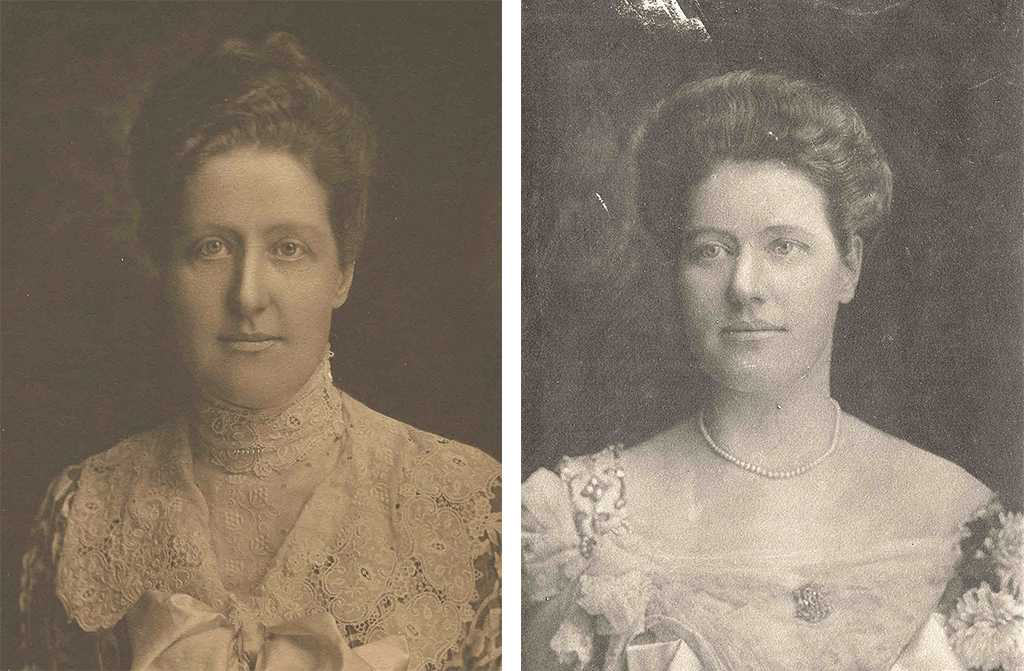
Portraits of Elizabeth d’Hauteville Kean and Lucy Halstead Kean, 1902, courtesy of the Liberty Hall Museum.
Liberty Hall Museum is a Georgian style house built in 1772 by William Livingston, member of the First and Second Continental Congress, Founding Father and First Governor of the State of New Jersey. In 1811, Liberty Hall was purchased by Peter Kean for his mother Susan Livingston Kean Niemcewicz, a niece of William and Susannah Livingston. In 1883, Susan’s grandson John Kean II (1814–1895) inherited the home. John Kean married Lucinetta Halstead Kean (1825–1912) and had nine children survive to adulthood. Known for their substantial donations to the community of Union, New Jersey, and the creation of Kean University, the Kean family helped shape the culture of the Gilded Age. Elizabeth Kean herself made significant contributions to the collection of the Cooper Union Museum, including the wonderful donation of children’s books given to the Hewitt sisters’ library by Elizabeth and her sister Lucy Halstead Kean after Elizabeth’s death.
Distantly related by marriage, the Kean daughters and Hewitt sisters crossed each other’s paths throughout their lives. Sarah and Eleanor Hewitt with Lucy and Elizabeth Kean are intertwined through high society functions including weddings and funerals. A wonderful account, in the New-York Tribune, of the 1888 wedding of Miss Katherine Winthrop (1866–1943) to Hamilton Fish Kean (1862–1941) mentions the Cooper family and Hewitt sisters attending at Grace Church. [1] Noted as “one of the prettiest ceremonies of the season,” the list of distinguished guests includes none other than “the Misses Hewitt.” The Kean’s were also attendees of Abram Hewitt’s funeral in 1903, with Elizabeth and Lucy’s brother U.S. Senator John Kean (1852–1914) serving as pallbearer. [2] The Kean and Hewitt sisters continued correspondence and even visitations, later in life. Their friendship carried farther than just an appreciation of art, but more of a familial support and adoration for the Hewitts’ dream of the museum and the Keans’ contribution to that dream. A 1925 letter from Sarah to Elizabeth highlights their close friendship.
(Below: September 1925 letter from Sarah Hewitt to Lucy Halstead Kean. Click images to enlarge.)
According to The Annual Report of the Trustees of the Cooper Union for the Advancement of Science and Art, Elizabeth Kean donated financially to the museum and library. Cooper Hewitt’s collection additionally holds nine gorgeous fans she donated. A Brisé fan dated 1710–20 is listed in Cooper Hewitt’s records as well as several of the books and financial donations. Lucy additionally served on Cooper Union’s Advisory Council of the Women’s Art School. A majority of the pieces donated by the Kean sisters demonstrate the beauty of illustration. The sisters saw these as major assets to the study of design.
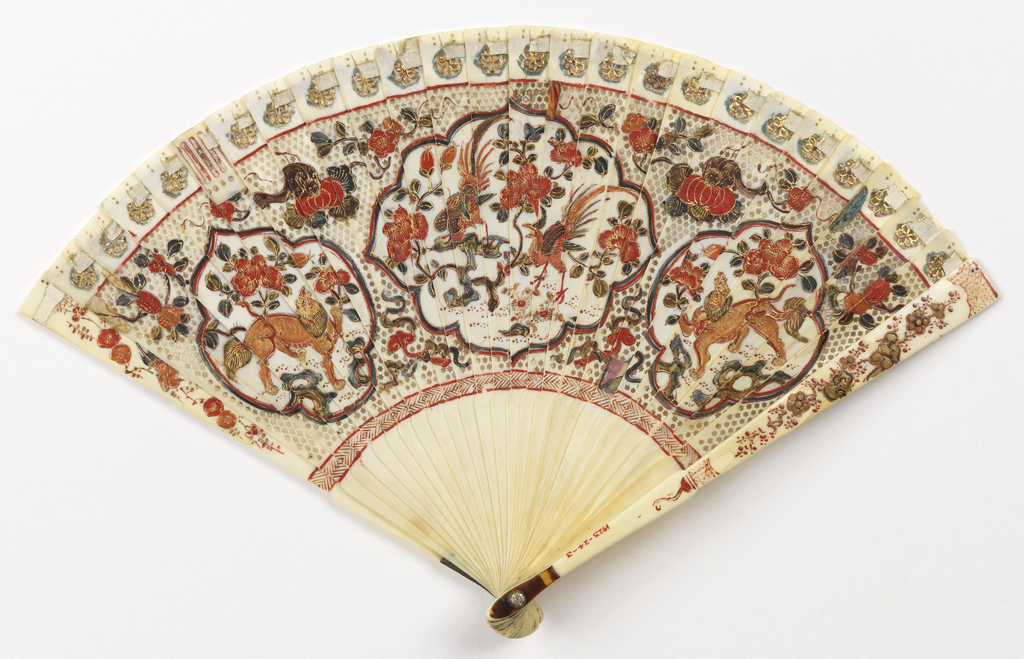
Brisé Fan (China), 1710–20; Carved, pierced, and painted ivory sticks with tortoise thumbguard and glass rivet, leather ribbon; H x W: 19 x 30.5 cm (7 ½ x 12 in.); Bequest of Miss Elizabeth d’Hauteville Kean, 1923-24-3

(top left) Pleated Fan (France), ca. 1815; Silk leaf embroidered with gold and silver sequins; pierced ivory sticks; H x W (open): 21.6 x 37.5 cm (8 1/2 x 14 3/4 in.); Bequest of Miss Elizabeth d’Hauteville Kean, 1923-24-2. (top right) Pleated Fan, ca. 1805; Silk leaf with silk net, embroidered with metallic spangles and stamped metal pieces; sticks of incised horn with applied metallic foil; H x W (open): 19.1 x 34.3 cm (7 1/2 x 13 1/2 in.); Bequest of Miss Elizabeth d’Hauteville Kean, 1923-24-8. (bottom left) Brisé Fan (possibly France), 1830–50; Needle-pierced paper leaves; carved and pierced bone sticks with applied metal spangles; pierced bone guards with turquoise and mother-of-pearl inlays; H x W: 24 x 45 cm (9 7/16 x 17 11/16 in.); Bequest of Miss Elizabeth d’Hauteville Kean, 1923-24-7. (bottom right) Pleated Fan, ca. 1880; Gouache-painted silk leaf, mother-of-pearl sticks; H x W (open): 32.4 × 55.2 cm (12 3/4 × 21 3/4 in.); Bequest of Miss Elizabeth d’Hauteville Kean, 1923-24-9.
The collection of beautifully illustrated children’s books currently in the Cooper Hewitt Library Collection started from the Hewitt sisters themselves, who donated their collection and noted the technical mastery of the illustrations. Elizabeth’s donation consists of children’s books by highly prized children’s illustrator Walter Crane. He was an admirer of the masters of the Italian Renaissance and heavily influenced by Japanese color prints seen on his cover art series. Walter Crane’s The Absurd A.B.C , The Hind in the Wood, The Alphabet of Old Friends, and The Flower Wedding have been conserved, treated, and include the bookplates “From the Library of Miss Elizabeth Kean, Ursino, Elizabeth, New Jersey.” These, amongst other titles, are coveted children’s works, several designed by Walter Crane, and La Guirlande des Mois, a five-issue series of almanacs embellished with text drawings and pochoir plates by George Barbier.
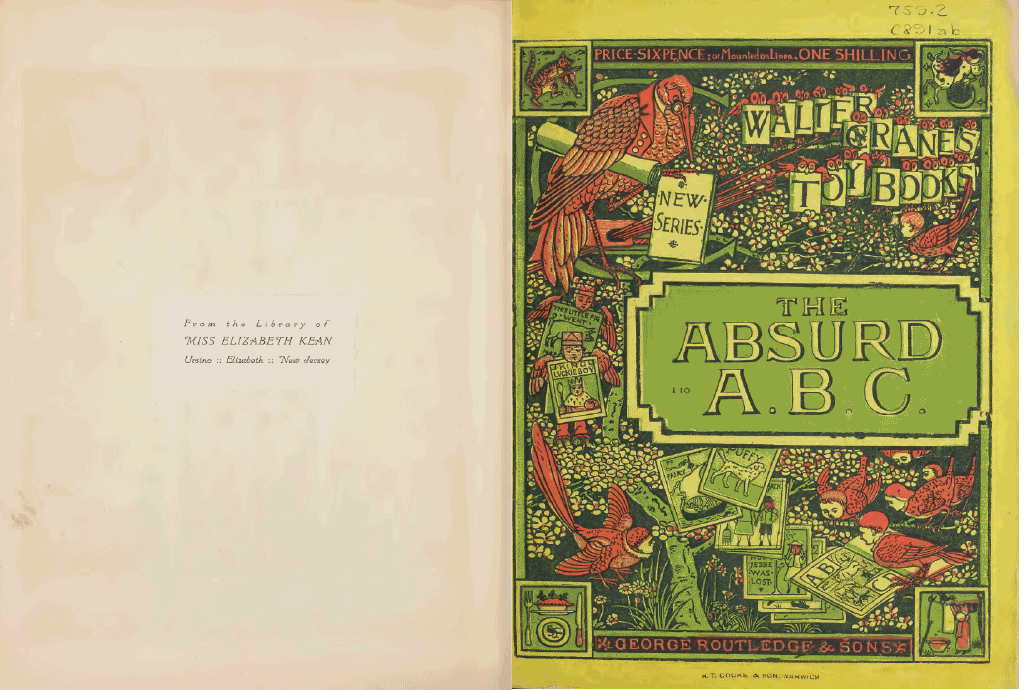
The Absurd A. B. C., 1874; Illustrated by Walter Crane (British, 1845–1915); Published by George Routledge and Sons (London); Smithsonian Libraries, GR486 .C89 1874
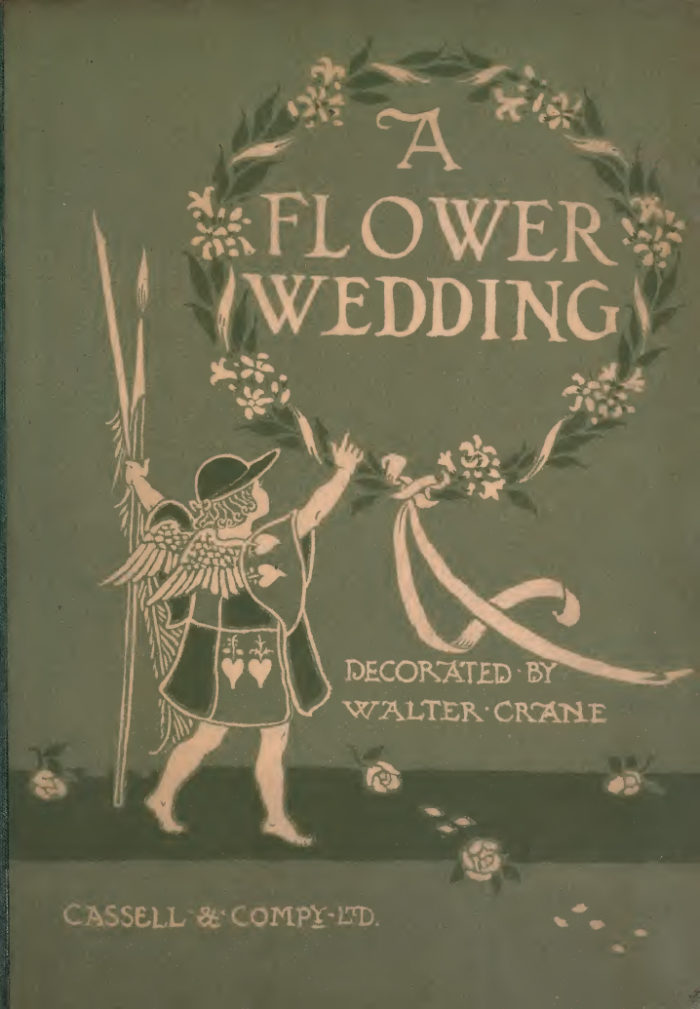
Cover, A Flower Wedding: Described by Two Wallflowers, 1905; Decorated by Walter Crane (British, 1845–1915); Published by Cassell & Company (London); Smithsonian Libraries, PZ8.3 .C89Flo 1905
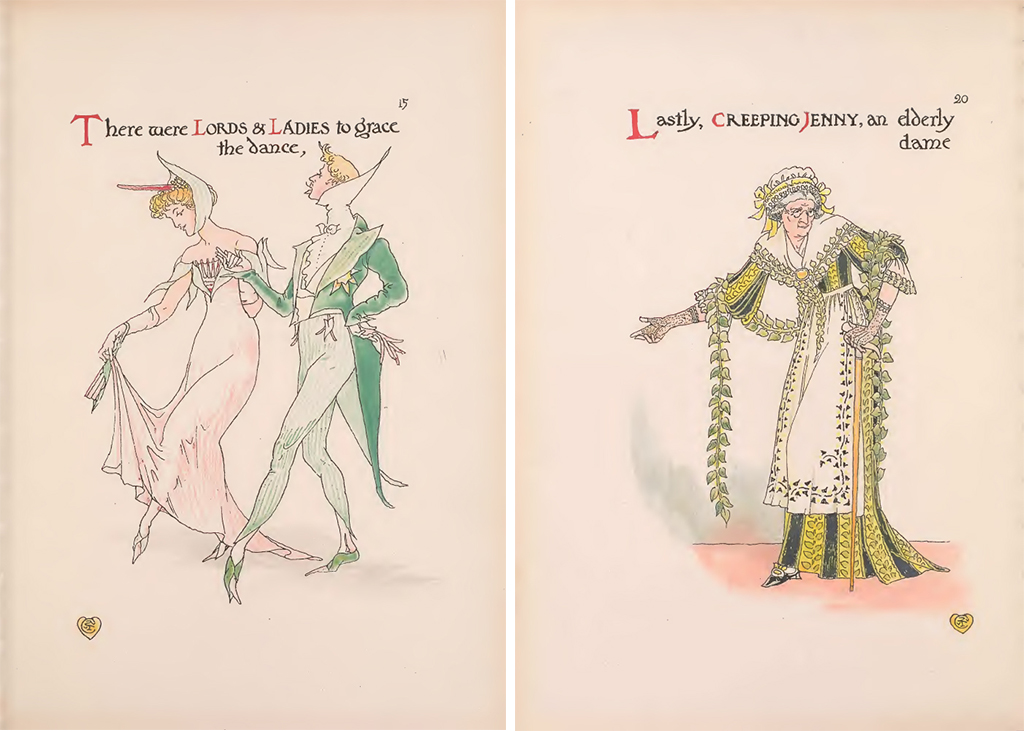
Pages from A Flower Wedding: Described by Two Wallflowers, 1905; Decorated by Walter Crane (British, 1845–1915); Published by Cassell & Company (London); Smithsonian Libraries, PZ8.3 .C89Flo 1905
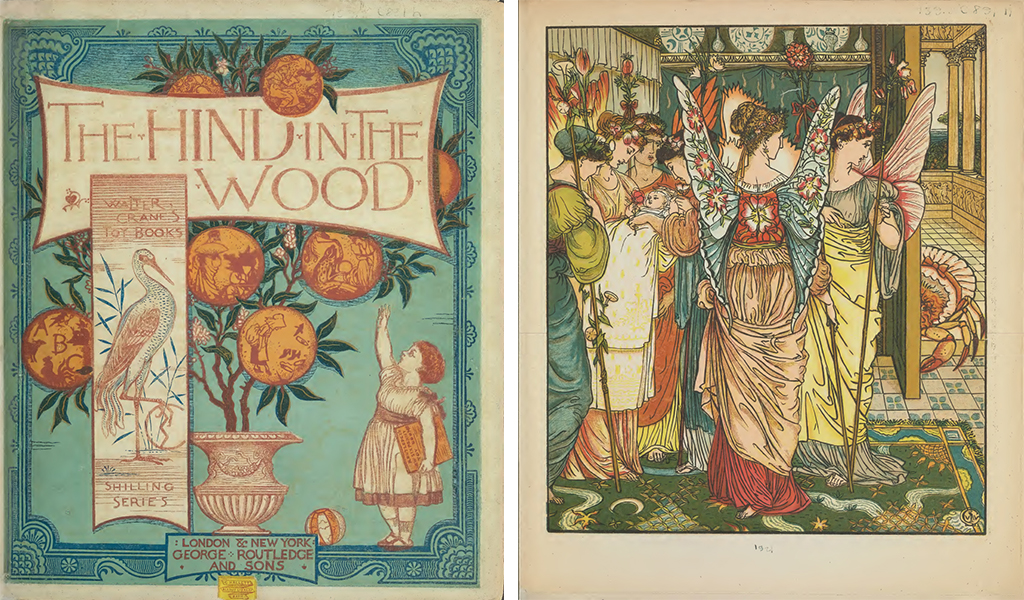
Cover and page, The Hind in the Wood, ca. 1875; Illustrated by Walter Crane (British, 1845–1915); Published by George Routledge and Sons (London & New York); Smithsonian Libraries, PZ8.1 .C89Hi 1875
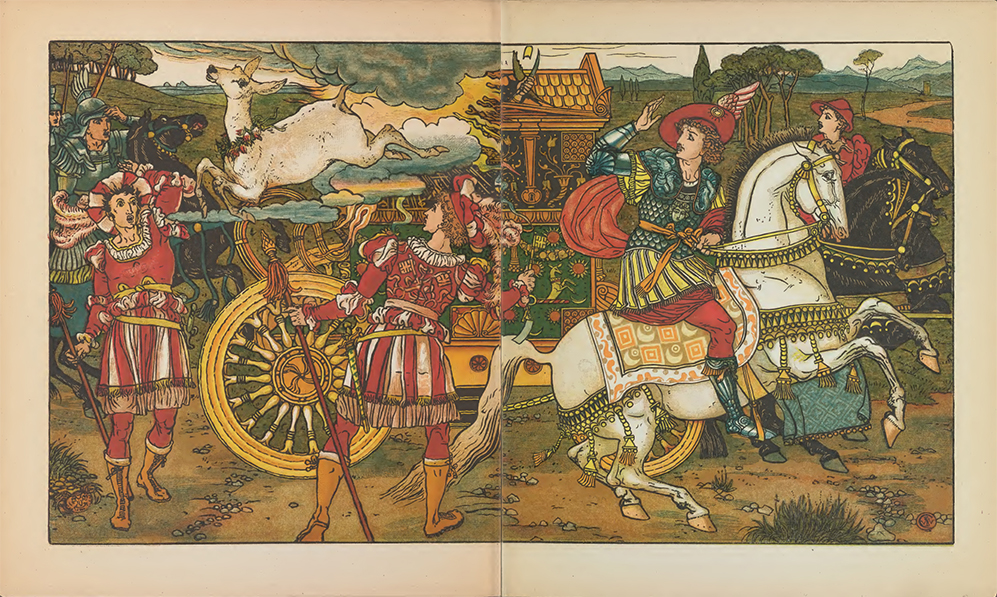
Pages from, The Hind in the Wood, ca. 1875; Illustrated by Walter Crane (British, 1845–1915); Published by George Routledge and Sons (London & New York); Smithsonian Libraries, PZ8.1 .C89Hi 1875
Nine titles have notes as well which indicate, “Presented by Miss Lucy H Kean, April 1925” as the tradition of donating materials continued after Elizabeth’s death from her personal library. Lucy also donated financially to both the museum and library in later years until her death in 1929.
Sources
[1] “Weddings,” New-York Tribune, January 13, 1888, ProQuest Historical Newspapers.
[2] “Abram S. Hewitt Buried.: Poem by Richard Watson Gilder Read at Funeral,” The Atlanta Constitution, Jan 22, 1903, ProQuest Historical Newspapers.

